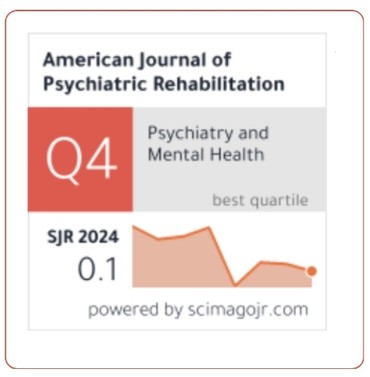Comparison Of Growth Patterns In Exclusively Breastfed Vs Formula Fed Infants In First Year Of Life
DOI:
https://doi.org/10.69980/ajpr.v28i5.379Keywords:
Infant nutrition, Breastfeeding, Formula feeding, Growth patterns, Body composition, Weight gain velocity, Infant development, Anthropometry, Bioelectrical impedance analysis, Growth standardsAbstract
Background: The influence of early feeding practices on infant growth trajectories has been a subject of increasing interest due to potential associations with long-term health outcomes. This study aimed to compare growth patterns between exclusively breastfed and formula-fed infants during the first year of life.
Methods: A prospective cohort study was conducted with 50 healthy term infants (25 exclusively breastfed, 25 exclusively formula-fed) enrolled within the first week of life. Anthropometric measurements including weight, length, and head circumference were obtained at enrollment and at 1, 2, 4, 6, 9, and 12 months of age. Body composition was assessed using bioelectrical impedance analysis at 3, 6, and 12 months. Growth parameters were converted to z-scores using WHO Child Growth Standards. Growth velocity and centile crossing patterns were also analyzed.
Results: The feeding groups showed comparable baseline characteristics except for maternal education, which was higher among breastfeeding mothers (p=0.042). Formula-fed infants exhibited significantly higher weight from 4 months onward (p<0.05) and higher weight-for-age and weight-for-length z-scores from 6 months onward (p<0.05), whereas length and head circumference remained comparable between groups. Growth velocity analysis revealed higher weight gain rates in formula-fed infants, particularly during 0-2 months (36.5 vs. 31.8 g/day, p=0.004). Body composition differed significantly, with formula-fed infants showing greater fat mass at all assessment points and higher body fat percentage at 6 and 12 months (p<0.01). Notably, 40.0% of formula-fed infants crossed upward by ≥2 weight-for-length centile lines compared to only 4.0% of breastfed infants (p=0.003).
Conclusions: Exclusive formula feeding was associated with accelerated weight gain, higher fat mass accumulation, and more frequent upward centile crossing despite comparable linear growth when compared to exclusive breastfeeding. These distinct growth trajectories highlight the importance of feeding mode as a determinant of early body composition development, with potential implications for future metabolic health.
References
1. World Health Organization. Infant and young child feeding: model chapter for textbooks for medical students and allied health professionals. Geneva: World Health Organization; 2009.
2. Victora CG, Bahl R, Barros AJ, França GV, Horton S, Krasevec J, et al. Breastfeeding in the 21st century: epidemiology, mechanisms, and lifelong effect. Lancet. 2016;387(10017):475-90.
3. Dewey KG, Heinig MJ, Nommsen LA, Peerson JM, Lönnerdal B. Growth of breast-fed and formula-fed infants from 0 to 18 months: the DARLING Study. Pediatrics. 1992;89(6):1035-41.
4. Lönnerdal B. Bioactive proteins in human milk: health, nutrition, and implications for infant formulas. J Pediatr. 2016;173:S4-9.
5. Martin CR, Ling PR, Blackburn GL. Review of infant feeding: key features of breast milk and infant formula. Nutrients. 2016;8(5):279.
6. Fields DA, George B, Williams M, Whitaker K, Allison DB, Teague A, et al. Associations between human breast milk hormones and adipocytokines and infant growth and body composition in the first 6 months of life. Pediatr Obes. 2017;12:78-85.
7. Koletzko B, von Kries R, Closa R, Escribano J, Scaglioni S, Giovannini M, et al. Lower protein in infant formula is associated with lower weight up to age 2 y: a randomized clinical trial. Am J Clin Nutr. 2009;89(6):1836-45.
8. Patro-Gołąb B, Zalewski BM, Kołodziej M, Kouwenhoven S, Poston L, Godfrey KM, et al. Nutritional interventions or exposures in infants and children aged up to 3 years and their effects on subsequent risk of overweight, obesity, and body fat: a systematic review of systematic reviews. Obes Rev. 2016;17(12):1245-57.
9. Gidrewicz DA, Fenton TR. A systematic review and meta-analysis of the nutrient content of preterm and term breast milk. BMC Pediatr. 2014;14:216.
10. Rzehak P, Oddy WH, Mearin ML, Grote V, Mori TA, Szajewska H, et al. Infant feeding and growth trajectory patterns in childhood and body composition in young adulthood. Am J Clin Nutr. 2017;106(2):568-80.
11. Bell KA, Wagner CL, Feldman HA, Shypailo RJ, Belfort MB. Associations of infant feeding with trajectories of body composition and growth. Am J Clin Nutr. 2017;106(2):491-8.
12. Baird J, Fisher D, Lucas P, Kleijnen J, Roberts H, Law C. Being big or growing fast: systematic review of size and growth in infancy and later obesity. BMJ. 2005;331(7522):929.
13. Giugliani ER, Horta BL, de Mola CL, Lisboa BO, Victora CG. Effect of breastfeeding promotion interventions on child growth: a systematic review and meta-analysis. Acta Paediatr. 2015;104(S467):20-9.
14. Gale C, Logan KM, Santhakumaran S, Parkinson JR, Hyde MJ, Modi N. Effect of breastfeeding compared with formula feeding on infant body composition: a systematic review and meta-analysis. Am J Clin Nutr. 2012;95(3):656-69.
15. Woo Baidal JA, Locks LM, Cheng ER, Blake-Lamb TL, Perkins ME, Taveras EM. Risk factors for childhood obesity in the first 1,000 days: a systematic review. Am J Prev Med. 2016;50(6):761-79.
16. Kramer MS, Guo T, Platt RW, Vanilovich I, Sevkovskaya Z, Dzikovich I, et al. Feeding effects on growth during infancy. J Pediatr. 2004;145(5):600-5.
17. Zheng M, Lamb KE, Grimes C, Laws R, Bolton K, Ong KK, et al. Rapid weight gain during infancy and subsequent adiposity: a systematic review and meta-analysis of evidence. Obes Rev. 2018;19(3):321-32.
18. Chan D, Goruk S, Becker AB, Subbarao P, Mandhane PJ, Turvey SE, et al. Adiponectin, leptin and insulin in breast milk: associations with maternal characteristics and infant body composition in the first year of life. Int J Obes. 2018;42(1):36-43.
19. Ballard O, Morrow AL. Human milk composition: nutrients and bioactive factors. Pediatr Clin North Am. 2013;60(1):49-74.
20. Weber M, Grote V, Closa-Monasterolo R, Escribano J, Langhendries JP, Dain E, et al. Lower protein content in infant formula reduces BMI and obesity risk at school age: follow-up of a randomized trial. Am J Clin Nutr. 2014;99(5):1041-51.
21. DiSantis KI, Hodges EA, Johnson SL, Fisher JO. The role of responsive feeding in overweight during infancy and toddlerhood: a systematic review. Int J Obes. 2011;35(4):480-92.
22. Li R, Magadia J, Fein SB, Grummer-Strawn LM. Risk of bottle-feeding for rapid weight gain during the first year of life. Arch Pediatr Adolesc Med. 2012;166(5):431-6.
23. de Onis M, Garza C, Onyango AW, Rolland-Cachera MF; le Comité de nutrition de la Société française de pédiatrie. WHO growth standards for infants and young children. Arch Pediatr. 2009;16(1):47-53.
Downloads
Published
Issue
Section
License
Copyright (c) 2025 American Journal of Psychiatric Rehabilitation

This work is licensed under a Creative Commons Attribution 4.0 International License.
This is an Open Access article distributed under the terms of the Creative Commons Attribution 4.0 International License permitting all use, distribution, and reproduction in any medium, provided the work is properly cited.









